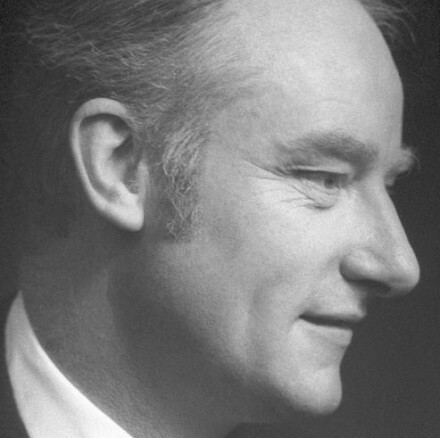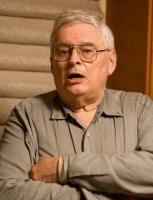Francis Crick: biography and contributions of this physicist and biochemist
Francis Crick was trained in different fields of scienceHe was a British physicist, molecular biologist and neuroscientist.
He is known for his important contribution to Molecular Biology, and in general to the field of science, for the discovery and approach to the model of the double helix structure of the deoxyribonucleic acid (DNA) molecule, a discovery made in collaboration with James Watson and Maurice Wilkins, which helped them win and be recognized with the Nobel Prize in Medicine and Physics in 1962.
He also made important contributions in the study and knowledge of consciousness and visual perception, raising the frequency of transmission of images from the retina to the brain.
In this biography of Francis Crick We will see the most relevant facts and events in the life of this scientist.
- Related article: "The 10 branches of Biology: their objectives and characteristics"
Brief biography of Francis Crick
Francis Harry Compton Crick was born in Northampton in the United Kingdom on June 8, 1916
. He was the eldest son of Harry Crick, who worked in a shoe factory, and Anne Elizabeth Wilkins. His family was religious, and as a child he attended the Congregational church, although when he turned 12 he told his mother that He preferred not to continue attending, since from an early age he was already interested in science, not showing himself related to any religion.He was a student at Northampton Grammar School, and given his good grades upon finishing school, at the age of 14 years old, he received a scholarship that allowed him to train in Mathematics, Physics and Chemistry at Mill Hill School, a internship.
Finally he decided to study Physics, but he was not accepted at Cambridge University, so he enrolled as a student at the University College London, a public university, welcoming students of any race, political belief or religious.
In 1937, at the age of 21, he graduated from University and began conducting research for his Ph.D., thesis that tried to measure the viscosity of water at high temperatures. He carried out the study and experiments in the laboratory of the physicist Adward Neville da Costa Andrade, although the development of his doctoral thesis would be seen affected by the outbreak of World War II, leaving the laboratory where he was doing research on it destroyed by the explosion of a bomb.
During the period of World War II between 1939 and 1945 he worked as a military physicist for the Royal Navy British, with the purpose of creating magnetic and acoustic underwater mines that could not be detected by the German army.
The war would mark a before and after in Crick's training and research, since she would not resume her doctorate in Physics, but this time she was interested in other branches of science such as Biology and Chemistry. So in 1947 she began to study Biology, given her previous training in Physics, he could be aware of the great achievements of this, he she helped to have a more open mind and a more positive and daring attitude regarding the possible advances in the field of Biology.
- You may be interested in: "Barbara McClintock: biography and contributions of this American scientist"
Consolidation of your professional life
In this way, Francis Crick entered the study and biological research, working for two years at the Cambridge Strangeways Laboratory, where investigated the properties and physical characteristics of the cytoplasm, liquid with a gelatinous texture where the organelles of the cells are found.
Later he moved to the Cavendish Laboratory also in Cambridge, doing research together with chemists Max Perutz and John Kendrew under the direction of Lawrence Bragg, physicist awarded the Nobel Prize in Physics in 1915 for his contributions to X-ray crystallography, an experiment whose purpose is to study and analyze the materials.
- Related article: "Rosalind Franklin: biography and contributions of this British chemist"
The stage of his main contributions to genetics
The laboratory led by Bragg competed for the discovery of the structure of deoxyribonucleic acid, DNA, with both the physicist and biophysicist John Randall., who had not accepted Crick into his laboratory and with the chemist and biochemist Linus Pauling, the latter had pointed out the alpha-helix structure of proteins.
Likewise, in 1951 Francis Crick began to dedicate all his time and effort to the study of the structure of the DNA molecule, considered very important in the transmission of information. hereditary of cells, together with the biochemist James Dewey Watson and the biophysicist Maurice Wilkins who had obtained images of large molecules from the crystallography technique X-ray.
Thus, after two years, on April 25, 1953, Crick and Watson published in the journal Nature their discovery of the helical three-dimensional structure of DNA, using the genetic competence analysis carried out with the X-ray crystallography technique made by the chemist Rosalind Franklin and the knowledge that Crick had in Biology and Watson in crystallography.
Thus, in 1962 Francis Crick, together with James Watson and Maurice Wilkins, received the Nobel Prize in Medicine and Physiology for their important discovery of the double helix structure of DNA. Unfortunately Rosalind Franklin, who we have already seen also contributed her contributions in crystallography genetics, he could not receive the award as he had died 4 years earlier at the age of 37 due to cancer of the ovary.

So that a model was proposed where reference was made to both the physical and chemical properties of deoxyribonucleic acid, which is made up of 4 nitrogenous bases called adenine, thymine, cytosine and guanine. The three-dimensional structure of DNA has the shape of a double helix made up of pairs of nitrogenous bases, adenine binds with thiamine and cytosine with guanine. In this way, a genetic code is created that allows each person to be identified and differentiated.
In the same way, the double helix structure allows DNA to be copied and thus generate other strands of nucleic acids, DNA and RNA. Based on this discovery, it is then that the Crick and Watson duo focus on the investigation of the encryption of the deoxyribonucleic acid molecule, a study that will last until 1966.
Outside the scope of the investigation, in 1963 the Order of the British Empire offered him the recognition of being named Sir, knight, but in this case Francis did not accept and rejected the proposal.
Given the great relevance of his discovery, also received in 1972 the Royal Medal awarded annually by the Royal Society of London to scientists who have made important contributions to the advancement of natural knowledge.
- Related article: "Differences between DNA and RNA"
I pass it from him to the United States
In 1973, already in the United States, he began working at the Salk Institute for Biological Studies, a name given to a complex of laboratories, considered world benchmarks in the world of biology, located at the University of San Diego in the State of California.
It is in this period when focuses on neuroscience, specifically in the study and research of the brain, making important contributions to the knowledge of consciousness and the transmission of images from the retina of the brain, a function of visual perception.
Three years later, in 1976 he began his work as a professor at the University of San Diego. In 1995 his health weakens, a fact that leads him to decide to leave his position as president of the Salk Institute for Biological Studies.
F. Crick also published different works: Of Molecules and Men in 1967, where he refers to the molecular biological revolution that was taking place at that time; Life ItSelf in 1981, where he raises the nature of life from the scientific field; What mad pursuit: A personal View of scientific Discovery in 1988, where he talks about the work done on the proposed structure of DNA and Central Dogma of Molecular Biology and finally The Astonishing Hypothesis: The Scientific Search For The Soul in 1994, where the central theme is the consciousness.
Last years and death
Notably In 1991 the Queen of England awarded him the Order of Merit of the United Kingdom for his services to the field of science.
Finally, Francis Crick died on July 28, 2004 at the Thornton Hospital of the University of San Diego, California, at the age of 88 due to colon cancer.


